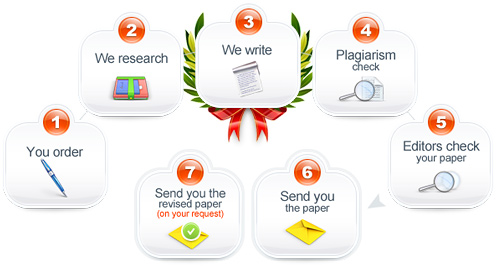Topic: prevention of iv infections
Leading Change QI Project: Synthesis of the Relevant Literature, Thesis Statement, & Project Outcomes
Part I: Synthesis of Relevant Literature
Purpose
Develop a scholarly evidence base to support your Leading Change project by synthesizing relevant literature. A literature synthesis combines key information from different sources to form an integrated summary.

Prevention of IV infections Process
Using the search topics (keywords) you developed for Assignment 1 (or new keywords you have chosen as you have learned more about your project) and perform a literature search.
Select at least 4 peer-reviewed journal articles relevant to your project
You may include other supportive information from sources such as professional websites, trade publications, or other mainstream publications
Your sources should be current, ideally within the last 5 years, but no more than 10 unless the resource is a seminal work.
Fill out the matrix to organize the main ideas found in each of your sources (a blank matrix template and example are provided)
As you read your sources, take note of key ideas, including any conflicts or contradictions
Tip: key ideas are evidence, concepts, and observations you see repeated in the literature
Jot down the key ideas you find and fill out the matrix grid; remember: you will need to include your matrix along with your synthesis
After you have completed your matrix you can begin writing your literature synthesis by organizing your ideas into three sections: introduction, body, conclusion
Introduction: Presents your topic
Provide some background on your topic
Include a one-sentence statement that sums up the focus of your synthesis
Body: Integrates the main ideas related to your topic
Organize the evidence from your matrix into an informative explanation of the literature supporting your project; usually 2-3 paragraphs
Conclusion: Makes a final summary of your main ideas
Provide a clear connection back to your topic as stated in the introduction
Length: Approximately 700 words (not including matrix and references)
Use APA 7th edition format
Literature Synthesis DOs and DON’Ts
Do write your Literature Synthesis in the third person (write as if you are the narrator; e.g. he, she, it, they).
Do keep quoted material to a minimum; paraphrase key ideas from your sources into your own words and use in-text citations.
Don’t just summarize each of your sources. This is a common error students fall into when writing a synthesis. Remember: a synthesis combines key ideas from several sources into your own explanation of what the literature says about your topic.
Don’t forget to relate each part of your Literature Synthesis back to your stated topic.
Part II: Thesis Statement, & Project Outcomes
Prevention of IV infections Purpose
Now that you have synthesized the literature and developed a better understanding of your project, apply the Leading Change Framework to determine your thesis statement and project outcomes (adapted from Skelton-Green, Simpson, and Scott, 2007).
Process
BEING STRATEGIC
1. What is your thesis statement for the project?
The purpose of this project is: ______________________________
2. What do you envision as the outcomes of this project?
Write at least 2 measurable project outcomes that would occur if the project is completed successfully.
Think of these as the anticipated benefits or services that will be available to the agency/organization as a result of a successfully completed project.
A good outcome is specific, realistic, measurable. This is the only means of determining whether the outcomes have been achieved.
Measurement can be through surveys, tests, interviews, chart review, hospital quality data reports, attendance sheets, observations, etc.
Anticipated outcomes of a successful project:
Outcome #1: __________________measured by _____________________
Outcome #2: __________________measured by______________________
Prevention of IV infections Example:
The purpose of this project is to create a patient education checklist for nurses to use when discharging patients diagnosed with heart failure at ABC hospital.
Outcome #1: Decreased number of heart failure re-admissions, measured by chart review or through hospital quality data.
Outcome #2: Increased nursing satisfaction with the process of discharging heart failure patients, measured by a survey of nursing staff.
Part II does not require APA format
Reference: Skelton-Green, J., Simpson, B., Scott, J. (2007). An integrated approach to change leadership. Nursing Leadership, 20 (3), 1-15. doi:10.12927/cjnl.2007.19277
please see 2 Attachments these are templates to be filled within assignment.
Prevention of IV infections Related Posts:
- Nosocomial Infections: Infections caught in the hospital
- Surgical Site Infections and Prevention
- Primary and secondary prevention strategies for colorectal cancer. 2.Evidence supporting the recommendations for the prevention strategies for colorectal cancer. 3.Strategies must include cultural preferences of the Asian American population.
- Prevention strategies: primary, secondary, and tertiary prevention as they relate to disaster epidemiology
- Explain how health care reform has helped shift the focus from a disease-oriented health care system to one of wellness and prevention. Discuss ways in which health care will continue this trend and explain the role of nursing in supporting and facilitating this shift. In replies to peers, provide an example of wellness and prevention initiatives your organization or specialty area has in place.
- Ventilator-Associated Pneumonia, Hospital acquired pressure ulcers, and hospital acquired urinary tract infections
- Waterborne Outbreak of Cryptosporidium Infections
- Reduction Of Hospital Acquired Infections By Use Of Antimicrobial Surfaces
- Capstone Project- Hospital Acquired Infections
- Discussion: Sexually Transmitted Infections
- Assignment 1: Assessing The Genitalia And Rectum
- Discussion: Contraception Treatments

